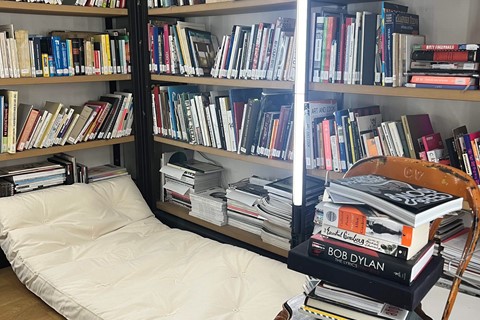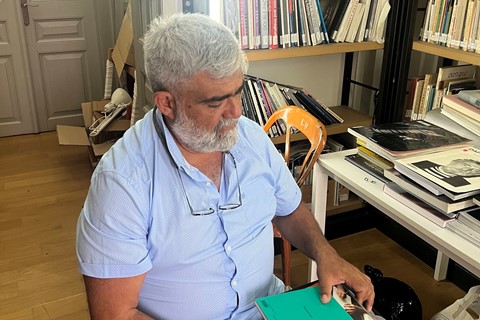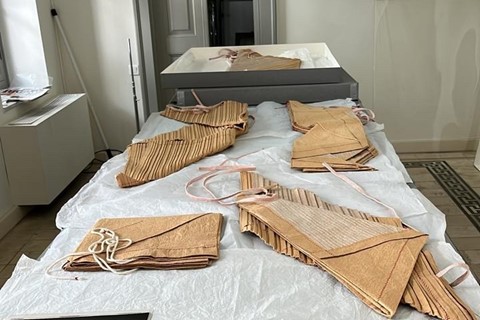How have people’s lives been shaped by the print matter they collect? In a column for AnOthermag.com titled Paper View, Norwegian publisher, curator and critic Elise By Olsen sifts through the libraries of various cultural figures, learning more about their lives and careers in the process.
I’m at Atopos cvc in Athens, a cultural organisation dedicated to contemporary visual culture, co-founded by fashion curator Vassilis Zidianakis back in 2003. I’ve been here for nearly five weeks; living in the archive, walking around the long, bright Ottoman corridors, cooking and eating in the exhibition spaces, sleeping on a futon inside an overwhelmingly large library of print ephemera, and working around a vast collection of paper garments stored in bombastic steel archival shelves. This paper load, from books about dresses to books that fold out into dresses – wearable, and/or readable objects – holds Zidianakis’s entire life and practice.
Printed matter was Zidianakis’ entryway into understanding the world of art and culture. He was born in 1966 in Crete, and his fascination with books started as an escapism from the environment around him. “Crete was very conservative,” he recalls. “As a homosexual, it was through books and magazines that I could travel to new worlds.” Inside his library, which is now housed at Atopos cvc, Zidianakis climbs up a ladder, pulling out a beige document folder from the tall steel bookshelves. “In the early 80s, in one of Heraklion’s few newsstands, I discovered an issue of a Greek magazine about moving arts. It had this article about a theatre that Robert Wilson, the director, had just done back then in Iran. The theatre lasted for 20 days, while the performers and its spectators moved through a mountain. They rested, they slept. I was amazed that a theatre could happen this way, outside of the stage, the scene.”
Zidianakis shows me a special tear-out from another one of his early magazine finds. “The article features one of [Issey] Miyake’s first menswear shows, set in a dungeon where the prisoners of the French Revolution were kept. Dozens of male models walked down the runway covered in baggy, white paper bodysuits to the sound of sea and waves. And as they walked, they took off their bodysuits, revealing weird sea creatures underneath.” This is how Zidianakis discovered Issey Miyake for the first time; reading about him and Robert Wilson prompted his interest in costumes. Zidianakis eventually left Crete to study cinema in Paris. Throughout the years, these two magazine spreads were glued to the walls of his dorm. “The crossover of fashion and costume – on moving bodies – was the absolute art. It changed something inside of me!”
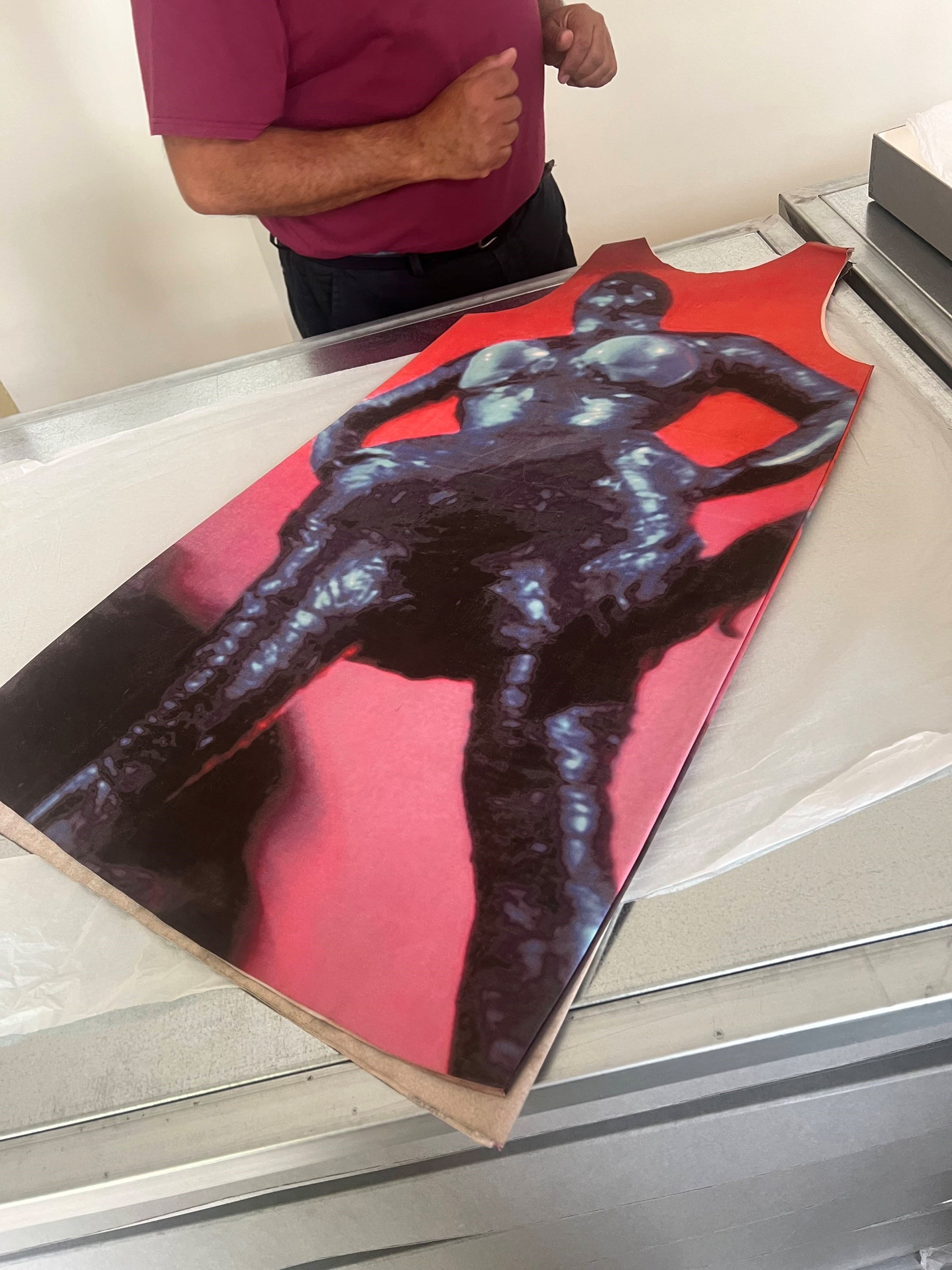
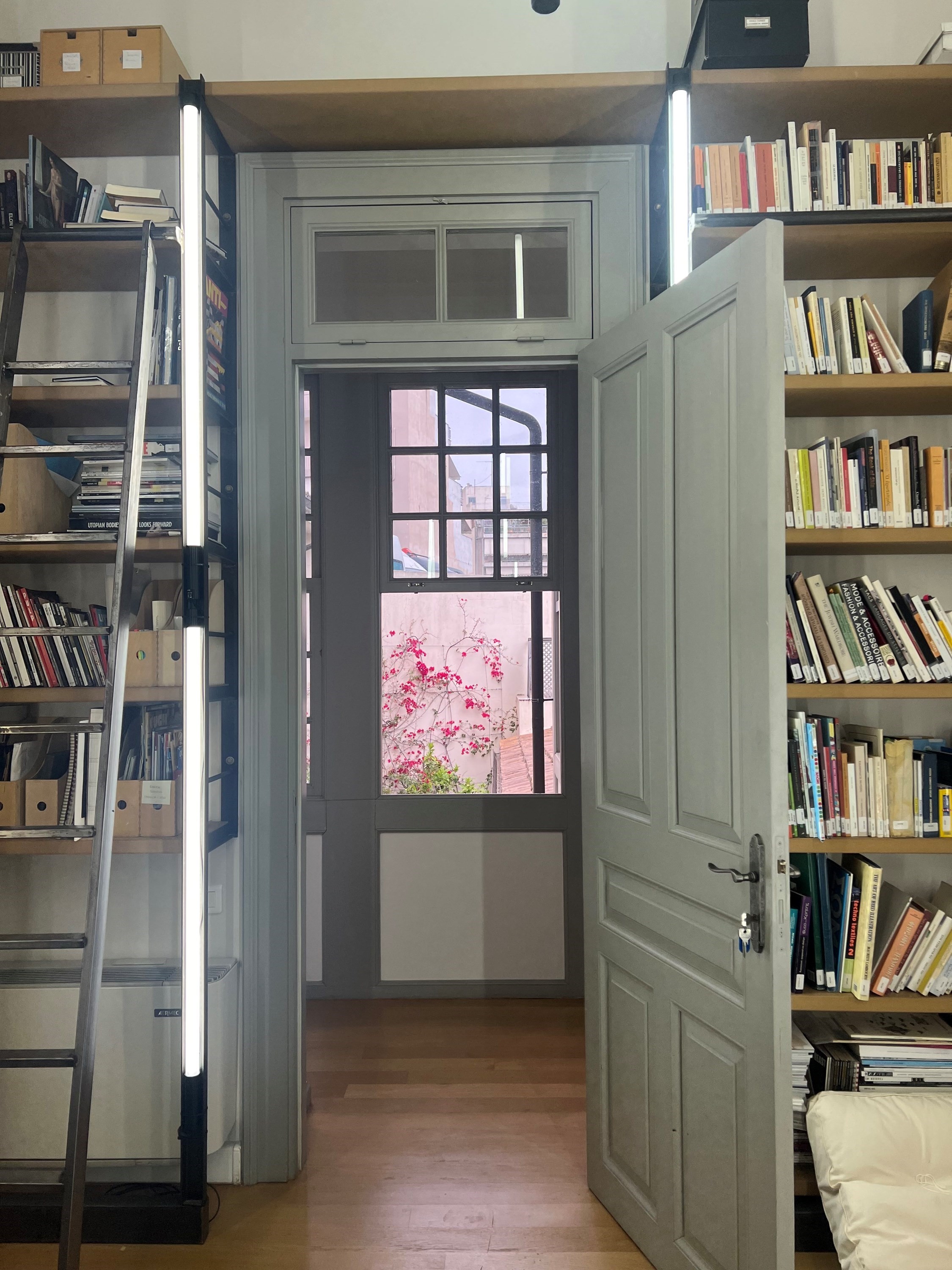
Zidianakis’ first big exhibition Ptychoseis = Folds + Pleats was held at the Benaki Museum in Athens on the occasion of the Olympic Games in 2005, showcasing draperies, textiles and clothing from around the world alongside ancient sculpture. Zidianakis treated garments as artefacts, and started researching textile technologies and innovative approaches to textile. “At the Metropolitan Museum in New York, I came across a paper dress from the 60s. I was fascinated by the idea of creating a wearable garment out of paper and had seen nothing like it before. I started exploring a second exhibition.” With logistics and shipping fees, it was too expensive to loan from the Met, but Zidianakis found the exact same dress on eBay for a very modest price. “Sadly I didn’t know how to use eBay back then, with the auction and all that, so I lost the dress. Later on, I managed to buy a different paper dress on eBay for around €30, just to see how paper would feel on the body.” This moment kickstarted a passion – and his collection.
Today, Zidianakis’ collection includes Japanese underwear from the 1500s made out of intricately woven accounting paper, A-line paper dresses from the 60s with advertising prints for new products like Campbell’s soup cans and laundry detergent, the infamous Airmail Dress by Hussein Chalayan, and a dress in Tyvek (a paper-like material) painted on by Robert Wilson (as a gift to the daughter of Willem de Kooning). There is also all kinds of paper attire by the likes of Maison Margiela, Comme des Garçons and Craig Green. Atopos cvc is made possible by the architect Stamos Fafalios, Zidianakis’ co-founder. The two met at the theatre in London when Fafalios was acting, and Zidianakis worked on set with costume. “We work, and sometimes collect collaboratively. It’s very organic what goes in and out of Atopos. Nothing is set in stone.”
Sometimes one collects, sometimes one creates. Zidianakis shows me a copy of his recent photography book Unlocked, a 512-page photo narrative attempting to ‘unlock’ the depiction of the naked body in the post-photographic digital era. “Back when I started, there was no internet. So when I got online, I was so shocked by all the things I found there that I didn’t buy a single book for a long time. Today, nude images by professional and amateur artists and individuals flood our screens. So many impressions, so little reflection!” Through this project, he has gathered, assembled and collected digital visuals and imagery from sources such as Tumblr and Pinterest. Even if it’s not collecting paper, it’s a way of transferring and translating images that were created for digital distribution into the analogue. “It was emotional for these artists, who had never seen their work in print. It was also funny because the files were very low quality and pixelated in print. It was charming.”
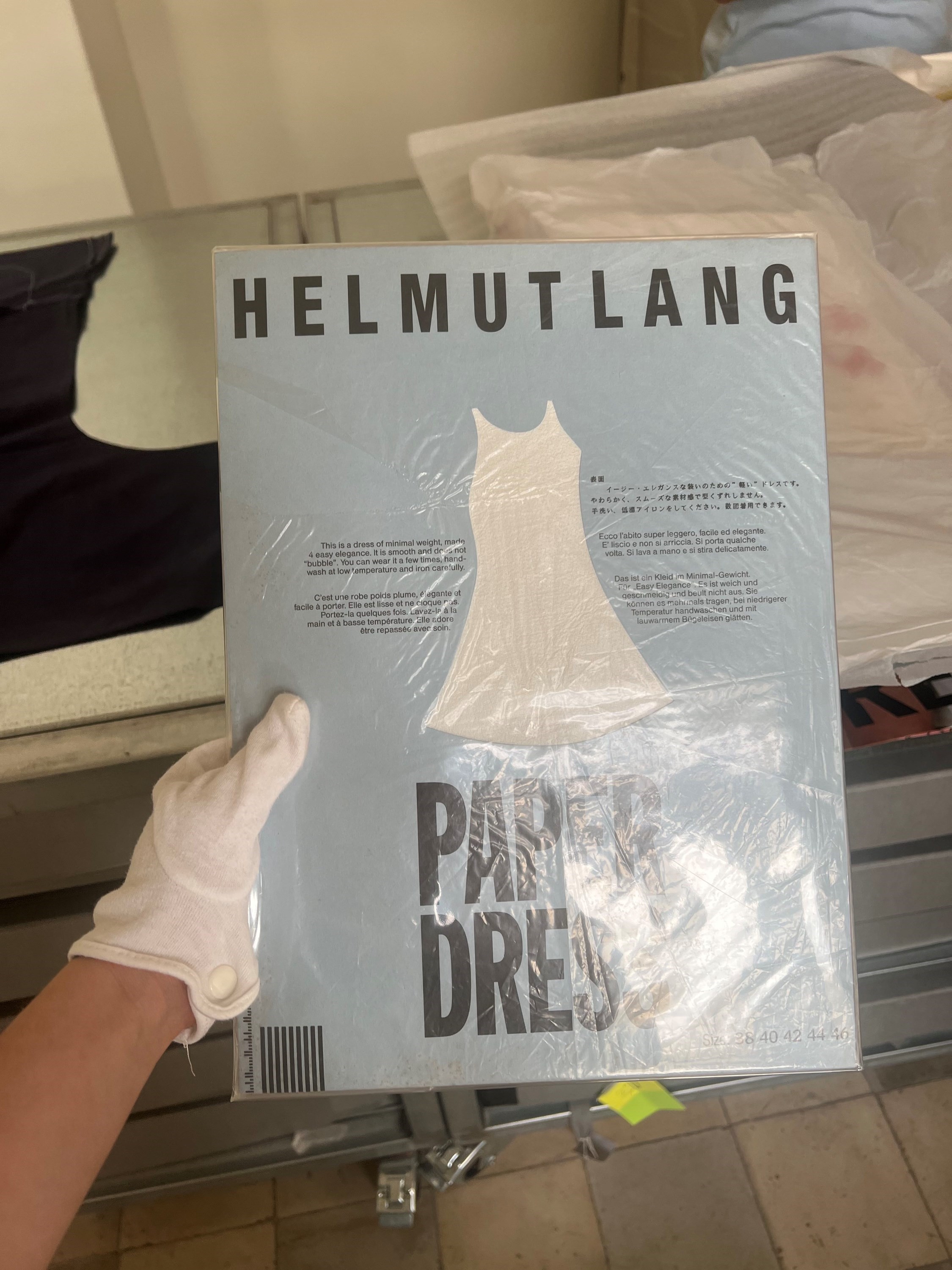
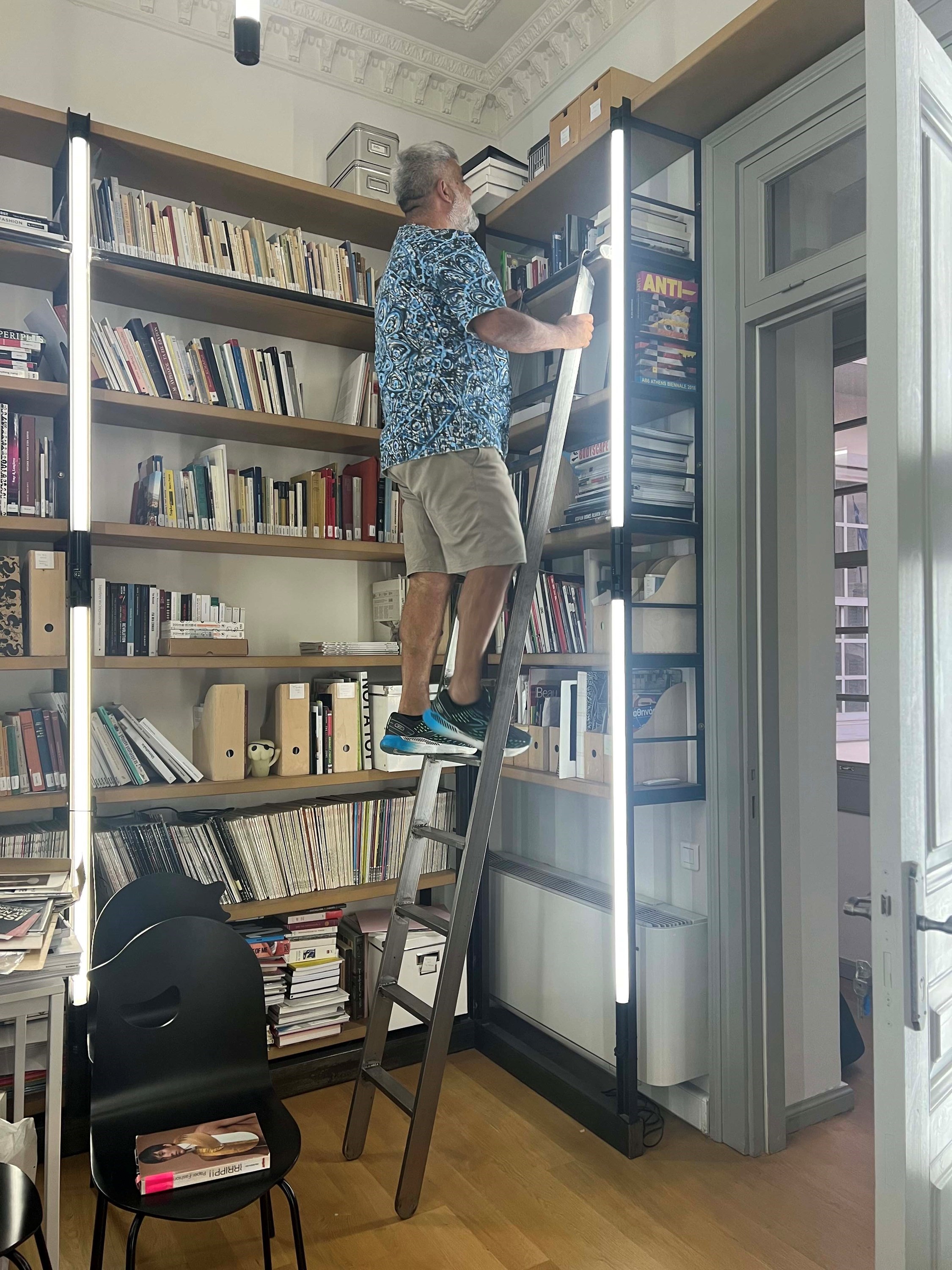
“My head is a laboratory. The space in which I live is a laboratory. In my house I have nothing on the walls, no books. Every time I move houses, I put all my things at Atopos to start fresh. That’s how the library has been built over 40 years,” he says. Fascinated with how Bob Wilson created theatres outside of established structures, Zidianakis has indeed created an alternative blueprint for exhibition-making, collection-building and research. His amassed holdings continue to grow through acquisitions and donations from the likes of Issey Miyake and AF Vandevorst.
Atopos means “the strange, the unwanted, the unclassifiable” – referring to the eccentric and unorthodox practice of organisation – of Zidianakis’ personal research and curatorial practice. Books from his childhood are here too, side-by-side with books, magazines and ephemera on fashion, art and contemporary dance. “I don’t like rigid systems,” he says. “For many years it was only me who knew where things were in my collection, and it worked for me. But when Stamos and I decided to make the library accessible, we officially organised the books in a proper library system. Since then, I lost touch with my library. I can’t find anything. And when I go back into the library and try to re-organise it to the order it was before, nobody else can find anything.”
After finishing his studies in Paris, Zidianakis started collaborating with the Greek set designer and exhibition maker Ioanna Papantoniou in the late 90s. That’s when he saw the fields of set design and exhibition-making co-existing for the first time. In Atopos cvc’s collection, each garment is carefully wrapped in silk paper inside an acid-free archival box – with a transparent plexi lid. In one way, the collection is stored and preserved, on the other, it’s put on display, by design. Scenography is, yet again, the star of the show. “Our archive is meant to be shown. We make tableaus and share stories. It’s about access.” Similarly, as a young man in Crete, Zidianakis sought access, and now he’s generously sharing his collection with others, ultimately institutionalising it to generate further ideas.
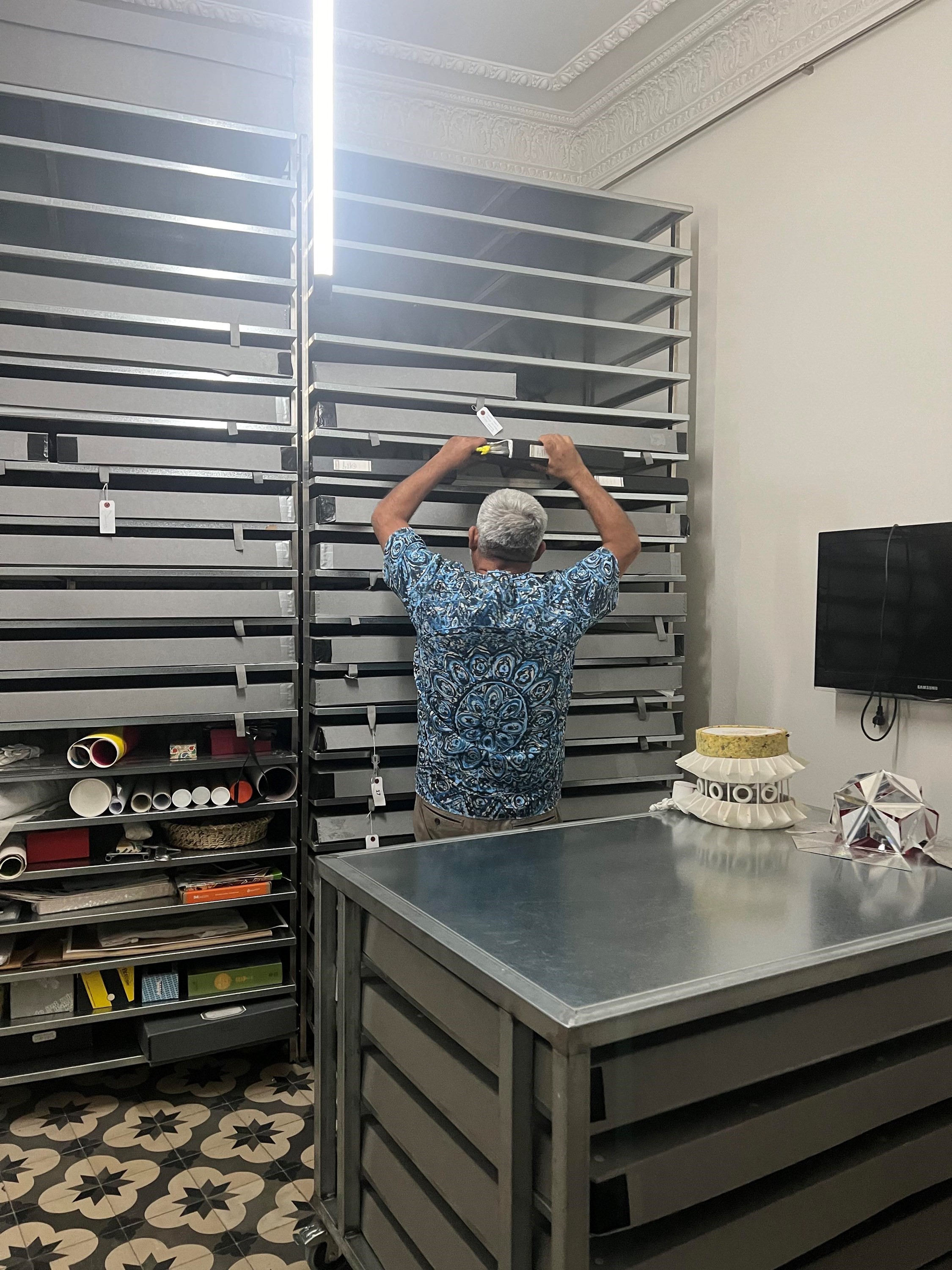
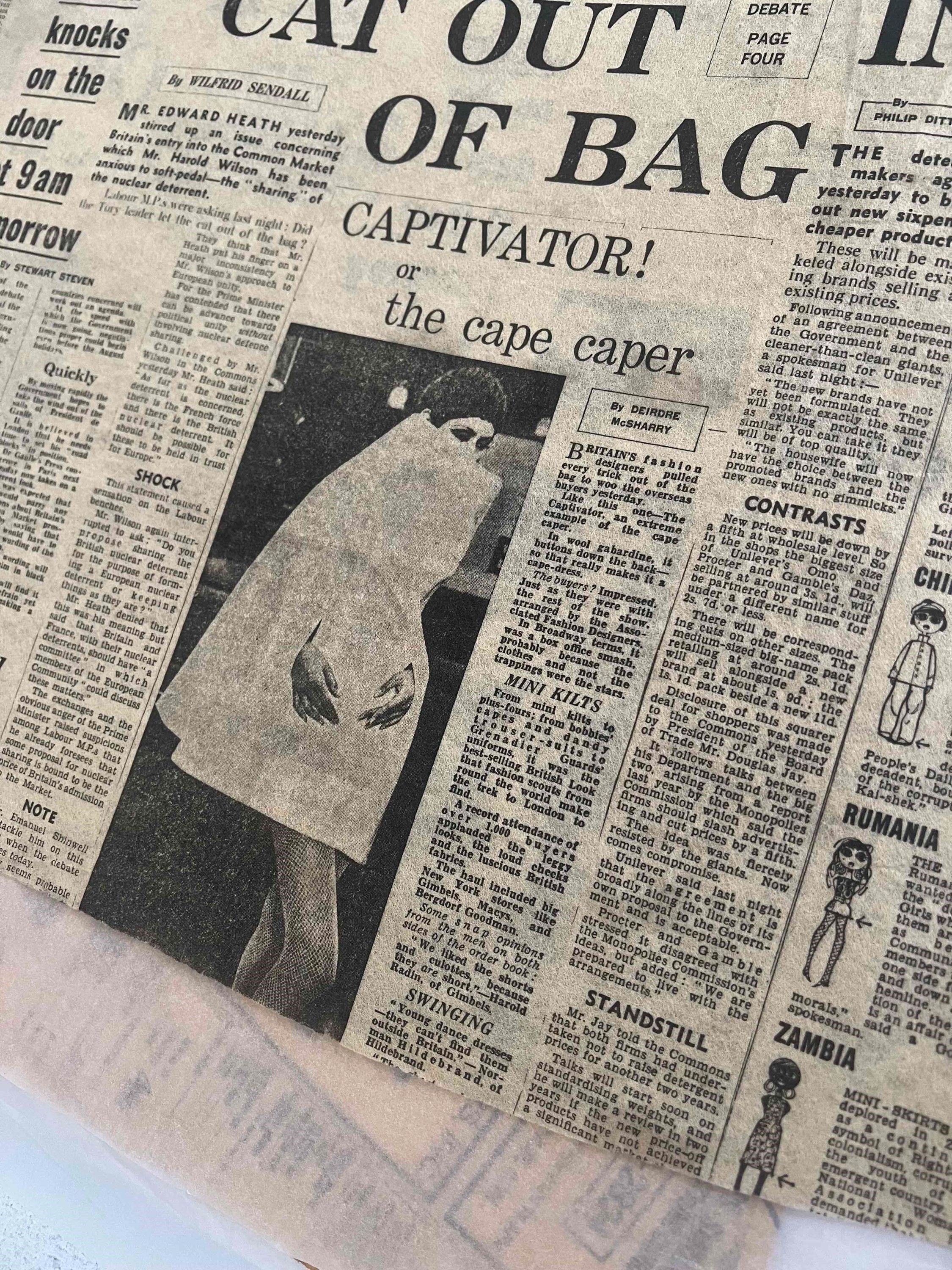
“I often buy a book by its cover, as mere visual references. So many of my books remain unread. I like to keep them close, hoping that, in some way, it will transmit into my mind, travel into my dreams,” he says. As author Renata Adler wrote in her novel Speedboat, some of the most important things are learned in your sleep. Zidianakis tells me that he often falls asleep with books and magazines falling onto his face, breaking numerous glasses a month.
“I’m not a collector,” Zidianakis laughs. “I don’t collect things to acquire them and keep them for myself. I collect to discover things, to share and show them to others. The objects are in constant dialogue with each other.” Indeed, a 60s paper dress made out of the old ‘yellow pages’ connects with poet James Merrill’s anthology Yellow Pages: 59 Poems. Spanner Magazine, a limited edition art journal, connects with a range of stamped jumpsuits made out of paper. Atopos cvc is neither a museum, a collection, a gallery or a project room, yet it’s all of the above. It is an undefined space making room for work and life, books and garments, introvert research and extrovert display.

